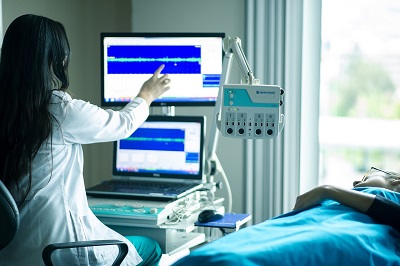For A-class medical device registration with the Health Sciences Authority (HSA) in Singapore, the regulatory requirements are based on a set of international standards designed to ensure the safety, efficacy, and quality of medical devices. While A-class devices are considered low-risk, they still need to meet essential safety and regulatory criteria to be approved for use in Singapore.
Here are the key standards and guidelines typically followed for A-class medical device registration with the HSA:
1. Singapore Medical Device Regulations
The primary regulatory framework for medical devices in Singapore is the Health Products Act (HPA) and the Health Products (Medical Devices) Regulations. The HSA administers these regulations to ensure that medical devices meet the necessary safety and quality standards before they can be sold in Singapore.
- Health Products Act (HPA): Governs the regulation of health products, including medical devices, in Singapore.
- Health Products (Medical Devices) Regulations: Provides the detailed regulations for medical devices, including classification, registration, and post-market surveillance.
For A-class medical devices, the regulations are generally more straightforward compared to higher-risk classes, but they still need to adhere to these national regulations.
2. ISO 13485:2016 - Quality Management Systems
The ISO 13485 standard is a key international standard for medical device manufacturers, specifically focusing on quality management systems (QMS). Although A-class devices are low-risk, manufacturers are still expected to implement a QMS to ensure product consistency and safety.
- ISO 13485 specifies requirements for a comprehensive quality management system for the design, production, installation, and servicing of medical devices.
- Manufacturers must provide evidence of compliance with ISO 13485 to demonstrate that they have implemented proper controls over the manufacturing process, design, and post-market activities.
3. ISO 14971:2019 - Risk Management for Medical Devices
While A-class devices are low-risk, a risk management process is still required. The ISO 14971 standard provides a structured approach to identifying and managing risks associated with medical devices.
- ISO 14971 guides manufacturers in assessing potential hazards, evaluating their risks, and taking steps to mitigate those risks to acceptable levels.
- For A-class devices, the risk management documentation is typically simpler, as these devices are considered to have a low risk of harm. However, risk analysis is still a requirement as part of the registration process.
4. IEC 60601 - Electrical Safety (If Applicable)
For A-class medical devices that involve electrical components (e.g., electrical stimulation devices, diagnostic equipment, etc.), the IEC 60601 series of standards for electrical safety may apply.
- IEC 60601-1: Specifies general safety and performance requirements for medical electrical equipment.
- IEC 60601-1-2: Focuses on electromagnetic compatibility (EMC) for medical devices.
- IEC 60601-2: Provides specific requirements for particular types of electrical medical devices.
- If your A-class device involves electricity (e.g., a battery-operated or powered device), you will need to provide evidence of compliance with these standards.
5. ISO 10993 - Biological Evaluation of Medical Devices
For devices that come into contact with the human body (e.g., implants, wound dressings, surgical instruments), the ISO 10993 series of standards for biocompatibility may apply.
- ISO 10993-1: Provides guidelines for the biological evaluation of medical devices and categorizes devices based on their contact duration with the body (e.g., short-term, long-term).
- Depending on the device's materials and its contact with human tissue, you may need to submit biocompatibility test reports to demonstrate safety.
For A-class devices, the requirements for biocompatibility are generally simpler than for higher-risk devices, but compliance with the ISO 10993 series may still be necessary, depending on the device's design and materials.
6. ISO 15223-1 - Symbols for Use in the Labeling of Medical Devices
The ISO 15223-1 standard specifies the symbols that must appear on the labeling of medical devices, providing essential information about the device's use, safety, and regulatory compliance.
- A-class medical devices must have appropriate labeling, including symbols and warnings in compliance with ISO 15223-1.
- For example, symbols may indicate whether a device is sterile, for single-use, or if it has specific storage requirements.
7. Good Manufacturing Practice (GMP)
Manufacturers of A-class medical devices are also expected to adhere to Good Manufacturing Practice (GMP) to ensure the consistency, safety, and quality of the device throughout its life cycle. GMP is often referenced under ISO 13485.
- GMP outlines the practices and systems required to produce medical devices that are consistently high-quality and safe for use.
- Compliance with GMP is typically confirmed through ISO 13485 certification, as it includes GMP principles as part of the quality management system.
8. Clinical Data (If Applicable)
While A-class devices generally do not require clinical data due to their low-risk nature, if a device has specific claims that require clinical validation (e.g., therapeutic claims), clinical data may be required.
- Clinical data can be provided through literature reviews, clinical trials, or clinical performance studies, but for most A-class devices, this is not typically necessary.
9. HSA’s Local Regulatory Guidelines
In addition to international standards, HSA's local guidelines and regulations must be followed. These guidelines are based on the overarching Health Products (Medical Devices) Regulations and provide specific requirements for device registration, post-market surveillance, and vigilance in Singapore.
- Ensure that your device complies with the local regulatory framework provided by HSA, which might include specific requirements for safety, efficacy, and labeling for the Singapore market.

Whatsapp or Wechat:+86 15816864648;email address:hito.lin@grzan.cn
.png)
.jpg)
.png)

.png)